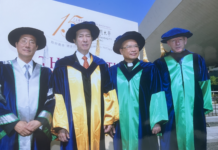The latest edition of Innovate, an online journal focusing on virtual worlds, is now available.
In the opening article, ‘Hacking Say and Reviving Eliza’, Rochelle Mazar and Jason Nolan argue that as text-based predecessors to graphical virtual environments like Second Life, MOOs can offer educators important insights on managing virtual communities to create rich, meaningful learning experiences.
The next two articles describe MUVEs created to meet the needs of specific educational contexts and offer evidence to support their effectiveness. In ‘The Time Factor: Leveraging Intelligent Agents and Directive Narratives in Online Learning Environments’ Greg Jones and Scott Warren use a MUVE they developed to facilitate literacy learning for middle schoolers to illustrate how intelligent agents, in-game characters that respond to the context of the game and to the individual player’s situation, can accelerate learning in MUVEs and other virtual learning environments. In ‘Knowledge-Driven Design of Virtual Patient Simulations’, Victor Vergara, Thomas Caudell, Timothy Goldsmith, Panaiotis, and Dale Alverson describe the development and evaluation of a MUVE-based simulator to provide a safe and engaging alternative to clinical practice for medical students.
Finally, in ‘Using Second Life with Learning Disabled Students in Higher Education,’ Stephanie McKinney, Agi Horspool, Renee Willers, Omar Safie, and Laurie Richlin describe the opportunities Second Life offers for students with learning disabilities. Innovative pedagogical uses of Second Life could benefit these students enormously. However, these opportunities come with their own challenges, and institutions and educators need to keep the specific needs of students in mind when developing programs or courses in Second Life.









 Dr. Tony Bates is the author of eleven books in the field of online learning and distance education. He has provided consulting services specializing in training in the planning and management of online learning and distance education, working with over 40 organizations in 25 countries. Tony is a Research Associate with Contact North | Contact Nord, Ontario’s Distance Education & Training Network.
Dr. Tony Bates is the author of eleven books in the field of online learning and distance education. He has provided consulting services specializing in training in the planning and management of online learning and distance education, working with over 40 organizations in 25 countries. Tony is a Research Associate with Contact North | Contact Nord, Ontario’s Distance Education & Training Network.

